5 import API has been provided by Microsoft to help customer to integrate third part solution or data migration.
- DataManagementDefinitionGroups-ImportFromPackage
- DataManagementDefinitionGroups-ImportFromPackageAsync
- DataManagementDefinitionGroups-ImportFromDMTPackage
- DataManagementTemplates-ImportTemplateFromPackage
- DataManagementTemplates-ImportTemplateFromPackageIgnoreMissingEntities
Goal : We are going to focus , in this article, on the Execution of an ImportFromPackage in D365FO with DMF REST API and check the result
1/ To start with import you need to create a data project in D365
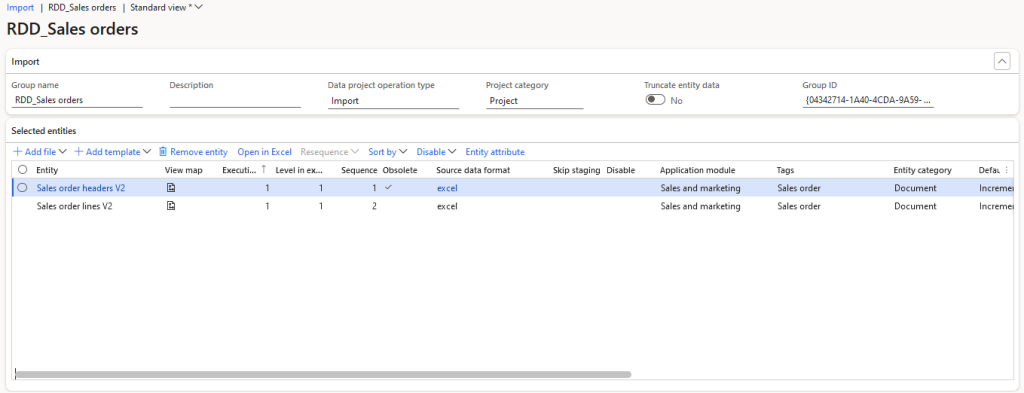
download package and grab manifest and Package header file to embed with data file to create new zip file.

2/ Check with Postman the complete sequence to execute (GetAzureWriteURL=> Upload=>ImportPackacge=>GetStatus=>GetErrors)

3/ Define a REST Client Resource in the magic xpi project with informations below
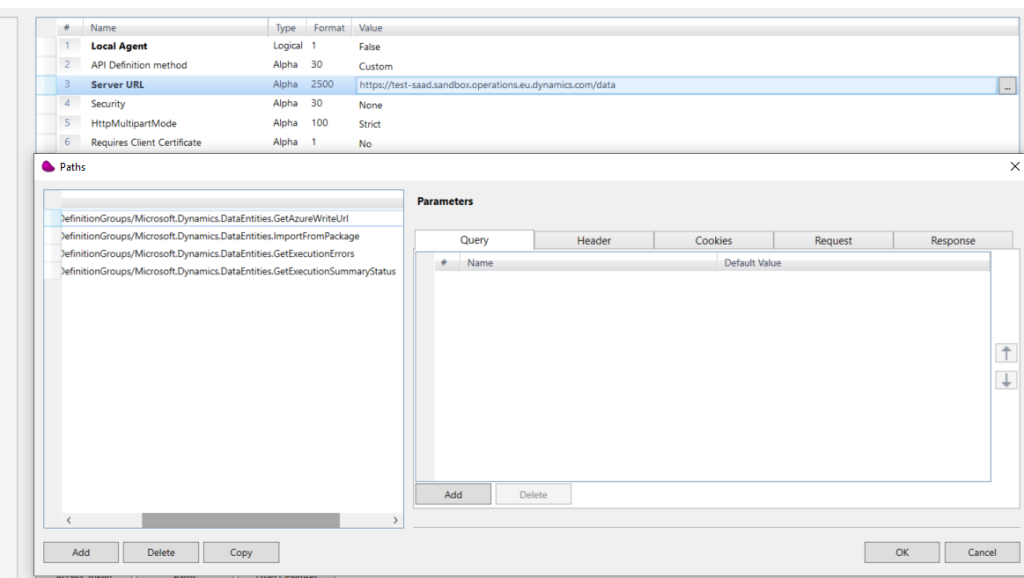
Define 4 paths
/DataManagementDefinitionGroups/Microsoft.Dynamics.DataEntities.GetAzureWriteUrl
/DataManagementDefinitionGroups/Microsoft.Dynamics.DataEntities.ImportFromPackage
/DataManagementDefinitionGroups/Microsoft.Dynamics.DataEntities.GetExecutionErrors
/DataManagementDefinitionGroups/Microsoft.Dynamics.DataEntities.GetExecutionSummaryStatus
For each endpoint, you have to define « Authorization » in the header
4/ The Magic xpi flow starts with the authentification process (Get Token)
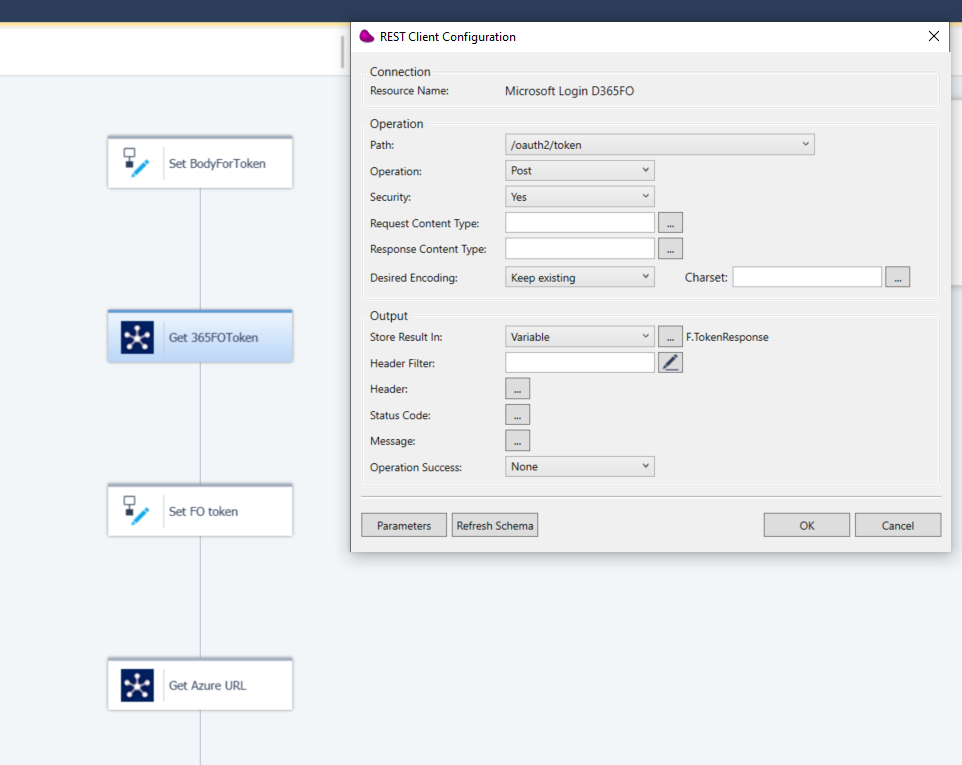
To get the token, you can check Steps 2,3 and 4 in the article (D365FO – Magicxpi How to use DMF ExportToPackage Method using REST API)
5/ After retrieving the token, do a POST to Get the Azure URL, use the REST Client Connector

Push the body in JSON format :
‘{« uniqueFileName »: »<zip file name> »}’
6/ Parse the JSON response to get the azure URL

Retrieve the JSON value content in a blob variable then parse this JSON to get the BlobUrl
Json response example :

7/ Load a zip file with sample data that you want to push to D365FO, to a Blob variable
(Zip generation can be done with magic xpi, using Datamapper and FileArchive component.
Your zip file must contain PackageHeader.xml, Manifest.xml and your data file(s) (in our example, 2 csv files for sales header and sales detail)
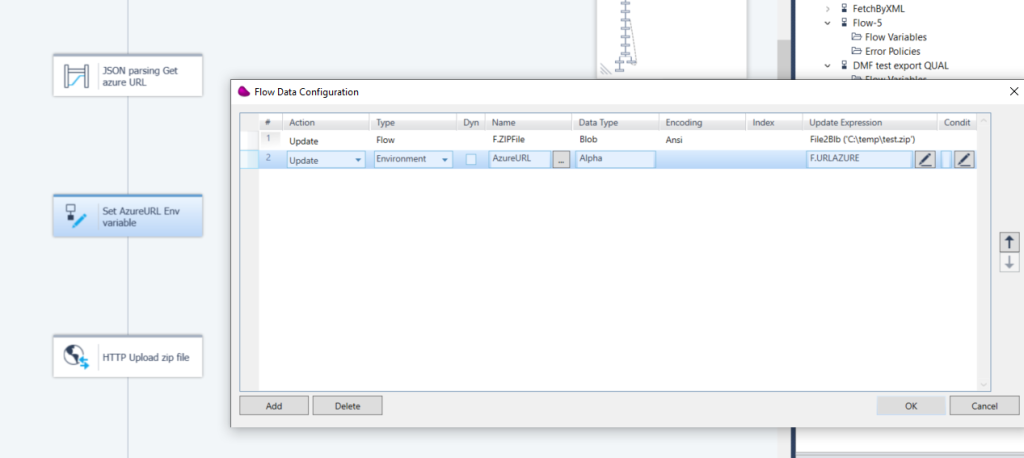
Update an environment variable with the Azure URL.
8/ upload the zip file using an HTTP component
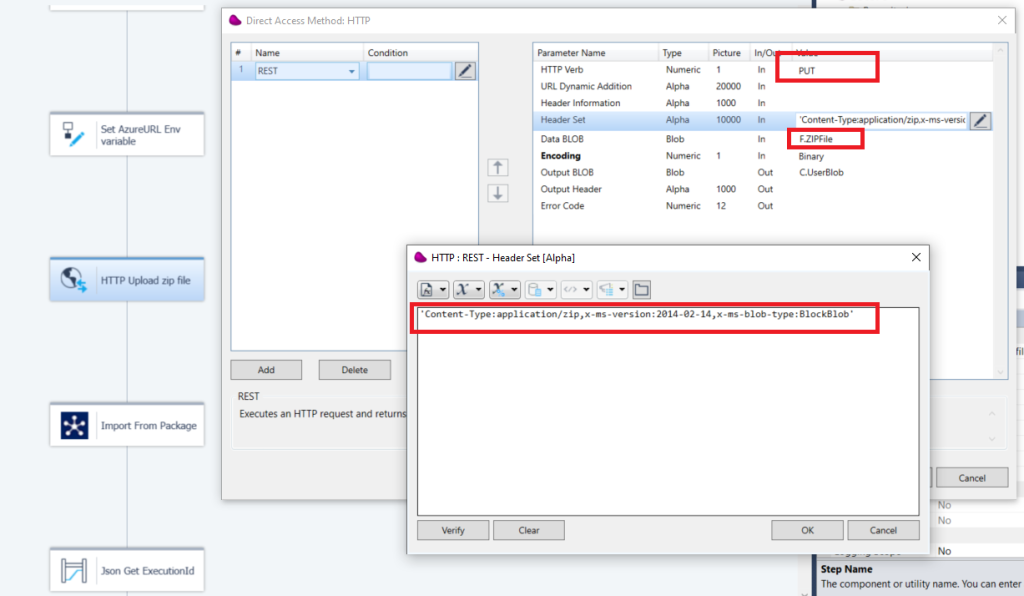
use a PUT and set theDataBlob to the ZIPFile blob variable
Set the header to : ‘Content-Type:application/zip,x-ms-version:2014-02-14,x-ms-blob-type:BlockBlob’
9/ use a REST Client Connector to call the import
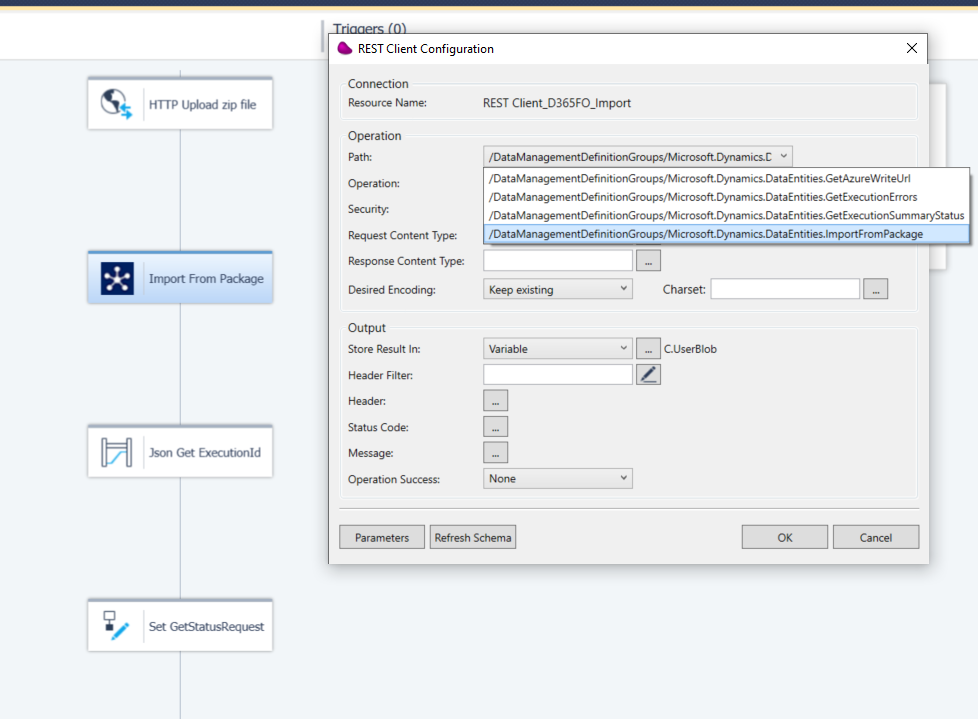
Do a POST with content Type : application/json and security : Yes
The JSON body to push must be in the format :

example :
‘{
« packageUrl »: »https://ql1grpr93twb76.blob.core.windows.net/dmf/test.zip?sv=2014-02-14&sr=b&sig=qtnGxnvomjJ4fSq9ykaFI3D7%2FDOBMh8cqYrOOU6OJAI%3D&st=2023-03-02T15%3A53%3A50Z&se=2023-03-02T16%3A28%3A50Z&sp=rw »,
« definitionGroupId »: »test »,
« executionId »: » »,
« execute »:false,
« overwrite »:false,
« legalEntityId »: »MSE »
}’
10 /Parse the JSON response to get the execution ID

11/ Build a JSON Request to get the status of the import
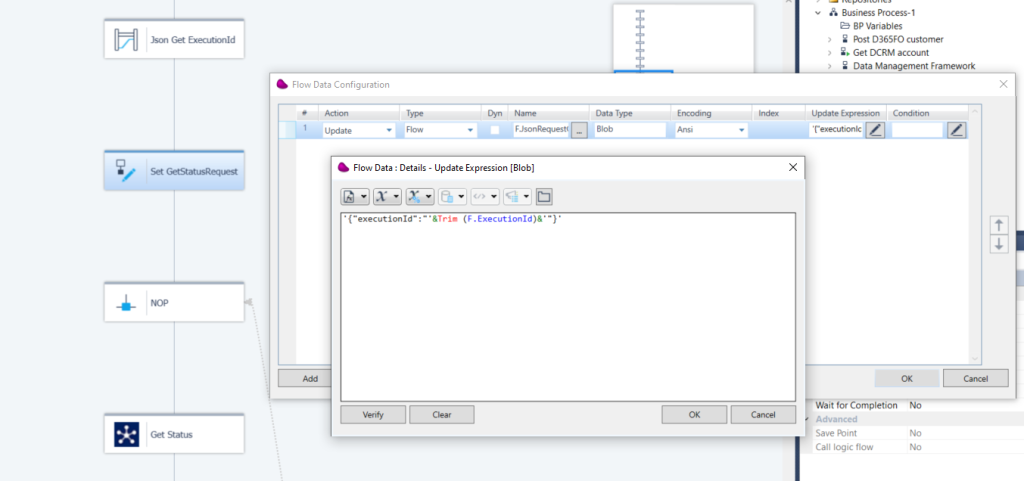
{« executionId »: »<executionid> »}’
12/ Use the REST CLIENT connector to get the Execution Summary Status
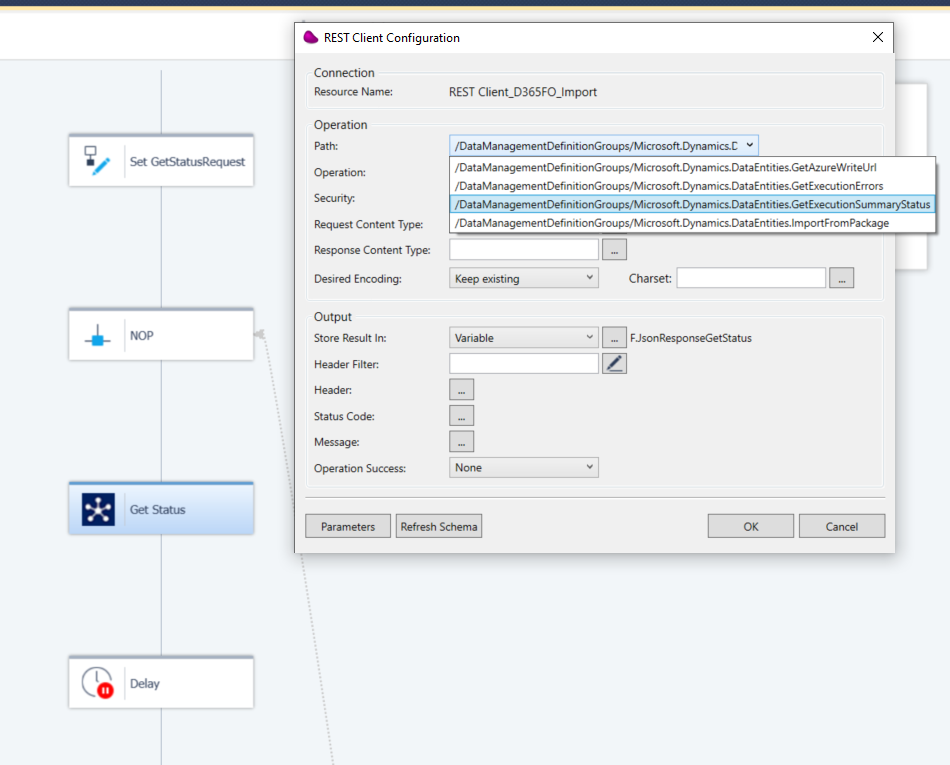
Set the DataBlob to the Json Body used in the previous step.
13/ Parse the JSON response to get the status
(*) Values for DMF Status are : Succeeded, PartiallySucceeded, Canceled, Executing, Failed, NotRun, Unknown
You can make a loop to ask for the status .
You can stop the loop when Status is Succeeded, PartiallySucceeded, Canceled, or Failed
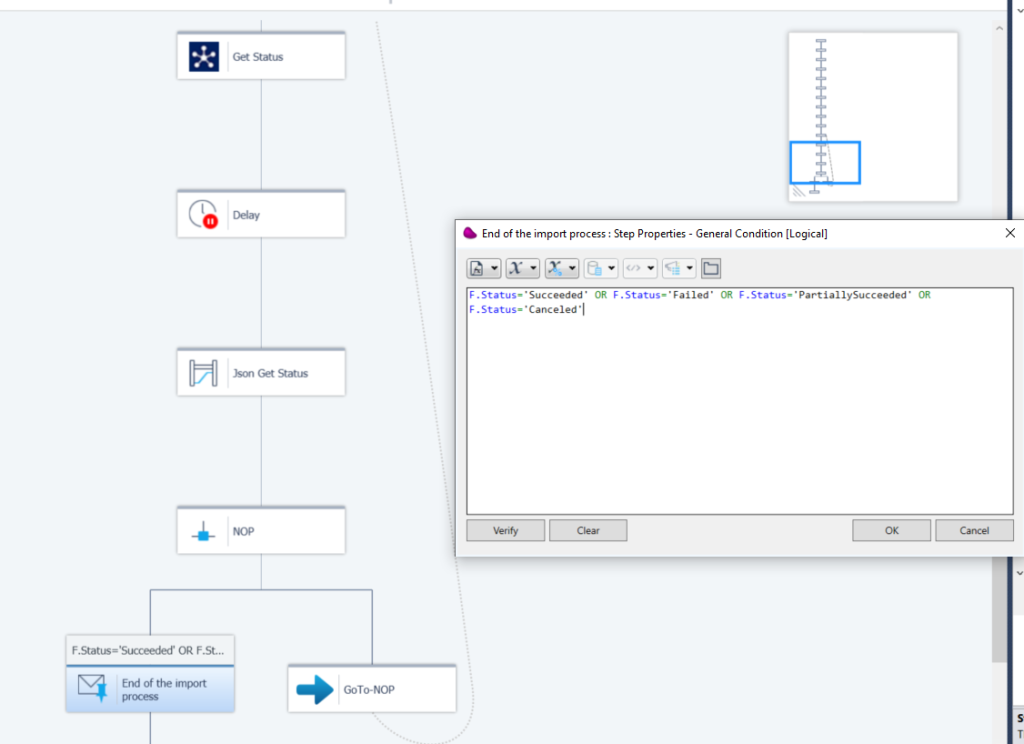
14/ if the status is PartiallySucceeded or Failed, you can retrieve the errors by doing a POST on
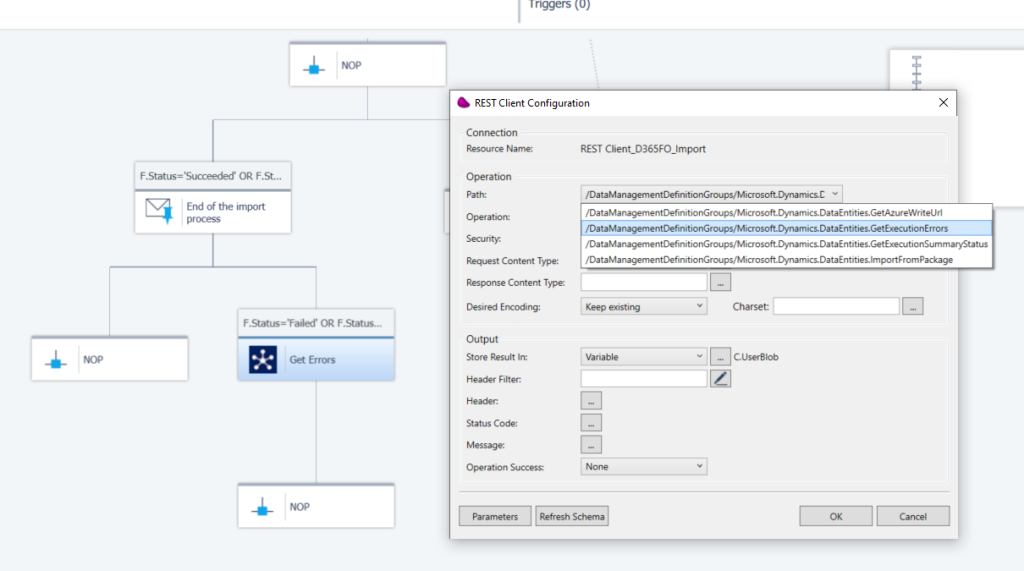
(*) Documentation can be found here
Data management package REST API – Finance & Operations | Dynamics 365 | Microsoft Learn